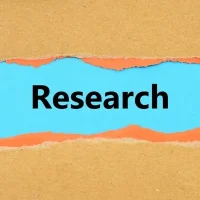Deadline: 1-Aug-23
Are you a museum with a collection of art and/or design created after 1945 and desire to make structural purchases based on your collection programs and acquisitions plans? If yes, then apply for the Mondriaan Fund’s Acquisition Programs.
Purpose
The Mondrian Fund stimulates the development and visibility of visual arts and cultural heritage through financial grants. In the Netherlands, including Aruba, Bonaire, Curaçao, Saba, St. Eustatius and St. Maarten, what the marketplace fails to facilitate, or to sufficiently facilitate, in these disciplines is made possible by the Mondriaan Fund. The specific objectives of the various types of grants can be found on the Mondriaan Fund website, in the online explanations for each grant.
Aims
- The aim is to increase the quality, coherence and visibility of the Netherlands Art Collection (Collectie Nederland).
- The grant amount may be used to fund major acquisitions that fit into the collection plan of the museum and are displayed to the public on a permanent or semi-permanent basis. Alternatively, museums may use the grant to, commission a visual artist to create one or more works of art for the collection, as part of their acquisition plans. In either case, the acquisition must fit into the museum’s collection plan and be important to the Netherlands.
Funding Information
- The amount of the contribution is determined per application. The grant is intended to cover a 2 year period.
Target Groups and Areas
- Mondriaan Fund grants can be awarded to a range of target groups and for various areas or disciplines. These include visual artists, institutions, organizations, curators, art observers and commissioners of art works in the field of visual art or cultural heritage.
- Visual artists
- The Mondriaan Fund defines visual artists as all those who work professionally in one or more of the disciplines of drawing, painting, printmaking, graphic art, sculpture, (social) sculpture and installation art, conceptual or performance art, artistic research, non-traditional forms of visual art, photography, audiovisual, digital or (new) media art, visual arts applications or art in public spaces.
- Curators and art observers
- In this category of curators, art observers, critics and researchers, the Mondrian Fund assumes that the applicant is professionally active in the field of contemporary visual arts or cultural heritage. A curator or art observer carries out projects that lead to the deepening of knowledge, visibility and insight in contemporary visual art or cultural heritage in the Netherlands.
- Cultural Heritage
- The Mondriaan Fund defines cultural heritage as all that which has cultural-historical value and collectively forms the material and immaterial heritage of Dutch society. This includes objects in museum collections, archaeological finds and archives, as well as the stories, customs and habits that are associated with them.
- Not included here are the conservation and management of monuments, landscapes, the excavation of archaeological objects and activities specifically related to excavations.
- Art Platform
- The Mondriaan Fund considers art platforms to include art initiatives, collectives and visual arts organizations which do not manage collections and which focus on the public presentation of innovative contemporary visual art. The primary objective of these art platforms, which may or may not have legal entity status, is the presentation of contemporary visual arts, without a profit motive.
- Gallery
- The Mondriaan Fund understands a gallery to be a professional, economically independent space that is open to the public, in which successive (changing) exhibitions are held with the aim of selling the work of living artists from the Netherlands.
- Art Fair
- An art fair is an event where suppliers and purchasers of art, such as galleries and art buyers, meet in the presence of the work. At an art fair, galleries with their own stand or exhibition space present themselves and the living artists they represent in the most representative way possible to interested visitors.
- Applicants outside the field of visual arts or cultural heritage
- Individuals or organizations working in areas other than the visual arts or cultural heritage who nevertheless believe that their activities significantly contribute to these fields can apply to the Mondriaan Fund, provided they adequately describe the visual arts or cultural heritage aspects of their work.
Eligibility Criteria
- Grant applications may be submitted by publicly accessible Dutch institutions which are listed with the Museums Register and which manage a substantial collection of contemporary visual art and/or design of national or international significance. Such institutions are also allowed to submit joint applications, or to apply for a grant in association with a visual artist.
- The institution must have a permanent budget of at least €50,000 per year for the acquisition of contemporary visual art and/or design. This budget may be funded by public or privat means. At least 50% of the budget must be spent on Dutch visual artists and/or designers, or on visual artists and/or designers who have been assimilated into the Dutch art scene.
- The institution must be willing to loan its objects to Dutch institutions and acts in accordance with the Basic Principles for Smarter Loan Transactions in the Netherlands. This means that Dutch museums will not be charged expenses for loaning works of art and that direct costs such as transport, insurance and packaging expenses (handling fee) will be minimised.
- The acquisitions will remain part of the Dutch National Cultural Heritage Collection for a long time and their ownership will not be transferred without the Mondriaan Fund’s authorisation. In the event that the institution chooses to dispose of its objects, this must be done in accordance with the Guideline for the Disposal of Museum Objects.
- The preservation of the acquired objects is guaranteed by means of proper constructional provisions, climate control and security measures.
- Privately owned museums are not eligible for this grant. Nor are art schools and post-academic institutions.
- The grant for Acquisition Programs cannot be used for acquisitions which have already received financial support from the government, or for acquisitions which institutions can be reasonably expected to fund from their regular budgets.
- The acquisition will be displayed to the public at once or as soon as possible.
- All cultural institutions subscribe to the Fair Practice Code, the Culture Governance Code and the Diversity & Inclusion Code.
For more information, visit Mondriaan Fund.









































